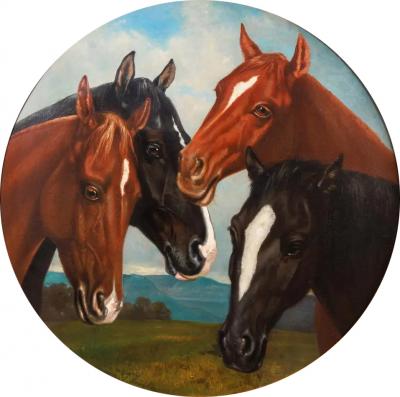- FINE ART
-
FURNITURE + LIGHTING
Shop By Category
Shop By Artist
- NEW + CUSTOM
- DECORATIVE ARTS
-
JEWELRY
Shop By Category
Shop By Artist
- INTERIORS
- MAGAZINE
Listing
Period
- Clear All
Frederick Rondel
American, 1826 - 1892
A highly respected academician and the only formal instructor of Winslow Homer, Frederick Rondel is noted for his landscape, marine, interior and animal paintings in oil.
Born in Paris in 1826, Rondel studied there under Theodore Gudin and then under Gudin's pupil, Auguste Jugelet, both romantic marine and landscape painters. He came to the United States as a young man and was in Boston from 1855 to 1857 and in South Malden, Massachusetts in 1858, although he also maintained a studio in New York City.
In 1860, Rondel moved to New York City and became an associate member of the National Academy of Design. He left for an extensive stay in Europe in 1862, returning in 1868 to teach at the National Academy.
Rondel's most famous pupil was Winslow Homer. Rondel is credited with teaching him how to use brush and pigment when Homer began painting in oils.
Combining broad, deep perspective and clear, subtle light, Rondel's landscape and marine paintings reflect the romanticism of Gudin and Jugelet, his teachers. But the subjects of his paintings are American, scenes of New York City and the New England countryside where he lived and worked. They are exemplified by Waiting for the Pilot, a large view of New York Harbor painted between 1872 and 1874.
Rondel's works have been exhibited at the national Academy of Design in New York City, at the Pennsylvania Academy of the Fine Arts in Philadelphia and at the Boston Anthanaeum. He died in 1892.
Memberships:
National Academy of Design, New York City
Biography courtesy of Roughton Galleries, www.antiquesandfineart.com/roughton
Born in Paris in 1826, Rondel studied there under Theodore Gudin and then under Gudin's pupil, Auguste Jugelet, both romantic marine and landscape painters. He came to the United States as a young man and was in Boston from 1855 to 1857 and in South Malden, Massachusetts in 1858, although he also maintained a studio in New York City.
In 1860, Rondel moved to New York City and became an associate member of the National Academy of Design. He left for an extensive stay in Europe in 1862, returning in 1868 to teach at the National Academy.
Rondel's most famous pupil was Winslow Homer. Rondel is credited with teaching him how to use brush and pigment when Homer began painting in oils.
Combining broad, deep perspective and clear, subtle light, Rondel's landscape and marine paintings reflect the romanticism of Gudin and Jugelet, his teachers. But the subjects of his paintings are American, scenes of New York City and the New England countryside where he lived and worked. They are exemplified by Waiting for the Pilot, a large view of New York Harbor painted between 1872 and 1874.
Rondel's works have been exhibited at the national Academy of Design in New York City, at the Pennsylvania Academy of the Fine Arts in Philadelphia and at the Boston Anthanaeum. He died in 1892.
Memberships:
National Academy of Design, New York City
Biography courtesy of Roughton Galleries, www.antiquesandfineart.com/roughton
